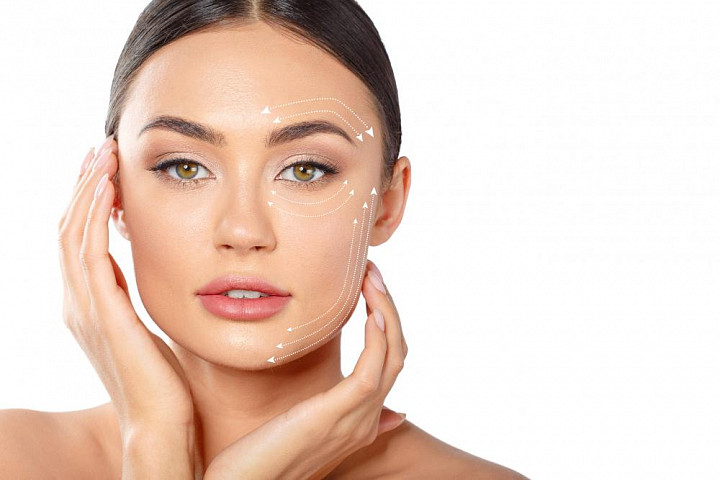Radiofrequency for Rosacea Smoothing Redness
Rosacea is a chronic skin condition characterized by persistent redness, visible blood vessels, and sometimes acne-like breakouts. It primarily affects the central face and can significantly impact one's confidence and quality of life. While there are various treatment options available, Rosacea Treatment in Dubai has emerged as a promising method for managing rosacea symptoms and achieving smoother, clearer skin. This article explores how radiofrequency works for rosacea and why it might be the right choice for those seeking relief from this common condition.
Understanding Rosacea
Rosacea is a multifaceted skin disorder with no single cause. Factors contributing to rosacea include genetic predisposition, environmental triggers, and abnormal blood vessel function. Common symptoms include:
- Facial Redness: Often described as a persistent flush or blush that can worsen with heat, spicy foods, or stress.
- Visible Blood Vessels: Small, dilated blood vessels near the surface of the skin, especially on the cheeks and nose.
- Inflammation and Swelling: The affected areas may become swollen and inflamed, sometimes accompanied by acne-like bumps.

Managing rosacea typically involves a combination of lifestyle changes, topical treatments, and in some cases, professional procedures. Radiofrequency therapy is one such professional treatment that has gained traction due to its efficacy and non-invasive nature.
What is Radiofrequency Therapy?
Radiofrequency therapy utilizes radio waves to heat the deeper layers of the skin, promoting collagen production and improving blood flow. This heat stimulates the skin's natural healing processes, leading to tighter, more even skin texture. For rosacea patients, the goal is to reduce redness and inflammation by targeting the underlying blood vessels and strengthening the skin.
How Radiofrequency Therapy Works
- Preparation: Before the procedure, the skin is cleaned, and a topical numbing cream may be applied to ensure comfort during the treatment.
- Application: The RF device is used to deliver controlled radiofrequency energy to the targeted areas. The energy heats the deeper layers of the skin while leaving the surface relatively cool.
- Treatment Duration: Each session typically lasts between 30 to 60 minutes, depending on the area being treated and the severity of the rosacea.
- Post-Treatment Care: After the procedure, patients may experience mild redness or swelling, similar to a sunburn, which usually subsides within a few days. Most people can return to their normal activities immediately.
Benefits of Radiofrequency for Rosacea
Radiofrequency therapy offers several benefits for individuals struggling with rosacea:
1. Reduction in Redness
RF therapy helps to target and reduce the appearance of visible blood vessels, which are a common symptom of rosacea. By heating these vessels, the treatment promotes their contraction and fading, leading to a reduction in overall facial redness.
2. Improved Skin Texture
By stimulating collagen production, RF therapy enhances skin texture and elasticity. This can help smooth out the bumpy texture that sometimes accompanies rosacea, leading to a more even complexion.
3. Minimally Invasive
Unlike more invasive procedures, radiofrequency therapy is non-surgical and involves minimal downtime. This makes it an attractive option for those looking to manage their rosacea without the need for extensive recovery.
4. Long-Term Results
With multiple sessions, RF therapy can provide long-lasting improvements in rosacea symptoms. Regular treatments can help maintain skin improvements and prevent the recurrence of redness and inflammation.
Considerations and Side Effects
While radiofrequency therapy is generally safe, it's important to consider a few factors:
1. Consultation
Before undergoing RF therapy, consult with a dermatologist or licensed practitioner who specializes in rosacea. They can assess your skin condition, discuss treatment options, and determine if RF therapy is suitable for you.
2. Possible Side Effects
Common side effects include mild redness, swelling, and sensitivity in the treated areas. These effects typically resolve within a few days. In rare cases, some individuals may experience temporary pigmentation changes.
3. Treatment Frequency
Optimal results are often achieved with a series of treatments. Your practitioner will recommend a treatment schedule based on the severity of your rosacea and your individual response to therapy.
Conclusion
Radiofrequency therapy offers a promising approach for managing rosacea, addressing both redness and skin texture concerns. By harnessing the power of controlled radio waves, RF therapy helps to reduce visible blood vessels, promote collagen production, and improve overall skin appearance. For those seeking a non-invasive solution to rosacea, radiofrequency therapy is worth considering as part of a comprehensive skincare regimen.
If you're struggling with rosacea and looking for an effective treatment option, consult with a qualified skincare professional to explore how radiofrequency therapy could benefit you. With the right care and treatment plan, you can achieve smoother, clearer skin and regain your confidence.
